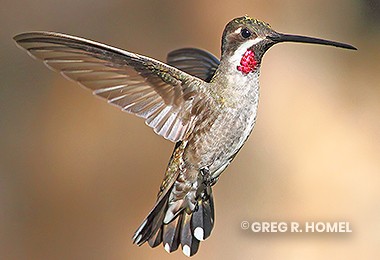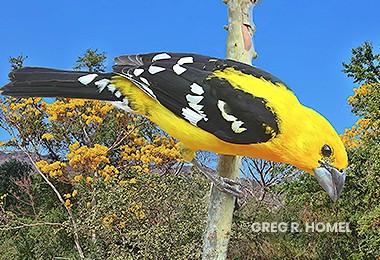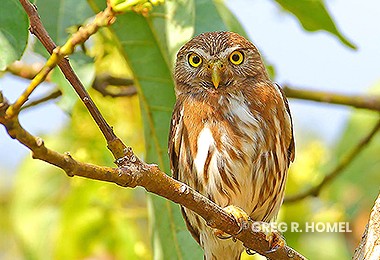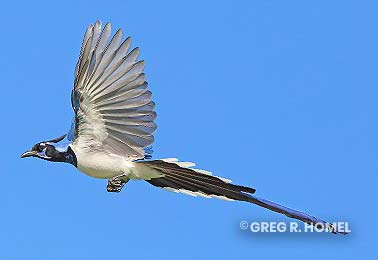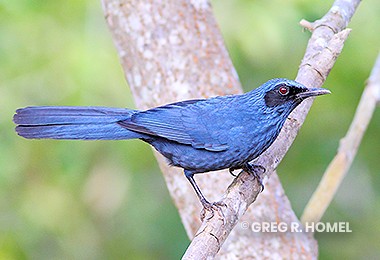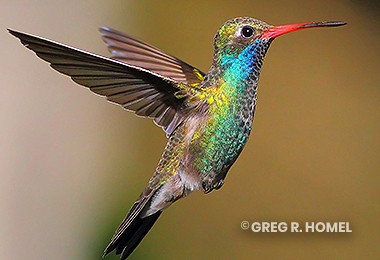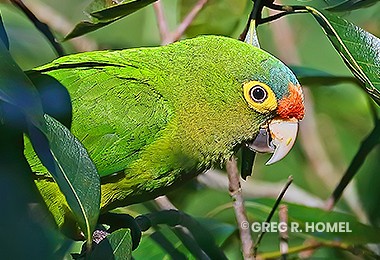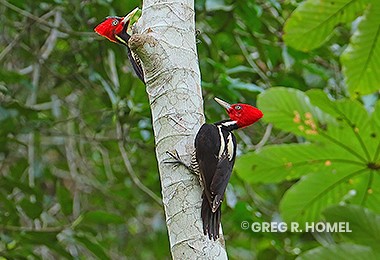Avian Treasures of the Sierra Madre Birding San Sebastian del Oeste & Cerro La Bufa
Birds to Watch: 299
Location: San Sebastian » Jalisco
GPS: 20° 51' 18.903'' N / 104° 48' 59.528'' W ALT: 2611.5 ft
Avian Treasures of the Sierra Madre
Enjoy birding amid refreshing breezes and the fresh scent of pines less than 50 miles from Vallarta’s tourist mecca—while partaking in high altitude coniferous forest birding and hummingbird watching among the clouds (or above them). Join our exciting Avian treasures of the Sierra Madre excursion for exciting day and overnight excursions from Puerto Vallarta to discover the true treasure of the Sierra Madre—it’s birds! Please inquire with BIM to easily schedule the excursion of your choice.
Mexican Specialties and Endemics
Popularity of this tour: This is a very popular getaway for birders interested in the amazing changes in avifauna with elevation. Let BIM take you from Sea Level to nearly 2743 m / 9,000’ in a mere 80 kms / 49.7 miles from Puerto Vallarta. Full day and overnight options are available to seek out the true treasure of the Sierra Madre—its beautiful birds!
– Short description:
Cerro La Bufa, located high above the historic former silver mining pueblo of San Sebastián del Oeste, is a popular gateway for birders longing to explore the avifauna of the mighty Sierra Madre Occidental—Mexico’s largest mountain range.
The refreshing highland environment and commensurate weather here is more like birding in Canada or the high Rockies in summer, and stands in marked contrast to that of hot and sultry Puerto Vallarta. Most days have a pleasant climate resembling springtime in the Rockies—even during the height of winter—at this tropical latitude!
Highlight birds awaiting intrepid birders who reach San Sebastian Del Oeste include up to 17 Mexican endemics, more than 45 neotropical species of note, 24+ wintering species from the far north, 2 summering specialties and another dozen highland species of interest, etc.
The lofty pine-fir forest cloaking Cerro La Bufa is home to an additional intriguing constellation of mountain-dwelling species preferring the highest elevations, including 6 additional resident highland specialties, 5 special endemics, 1 summering specialty, and another 4 widespread highland species of interest, etc.
It’s interesting and incredibly exciting to note that on this trip we have the very real potential to tally three species of pygmy-owls, each stratified by elevation—the Ferruginous, Colima (endemic) and Northern (Mountain) varieties, since they are all active during daylight hours!
For specifics and full bird lists for this trip, organized by habitat and season, kindly click the Bird List Tab.
- Private Pickup at 6:15a.m. sharp in Puerto Vallarta!6:15a.m.
Rise and shine. Those mountain birds get up early and so will we!
Birding in Mexico (BIM) will cheerfully pick you up at either your hotel or a prearranged meeting point—usually the Walmart / Sam’s Club parking lot off of Francisco Medina Ascencio—near the Liverpool Galleria across from the cruise ship terminal, if you’re in Puerto Vallarta, Jalisco, or The Home Depot parking lot at the intersection of Highway 200 and the 544 turnoff for Las Palmas at Las Juntas, if you’re staying in Nuevo Vallarta, Nayarit—then we’ll whisk you away to high adventure as you begin your full day of wonderful Sierra Madrean birding in paradise.
*Timings are approximate. Please be punctual. Casual window birding en route between each destination. We may vary the order of places visited, add or omit parts of this itinerary, depending on seasonality, tips from our regional birding friends and exciting discoveries from recent BIM Avian Treasures of the Sierra Madre excursions.
- Driving time between Vallarta and Today’s first BIM Birding Hotspot, San Sebastian del Oeste is 68.4 kms / 1hr 30 mins6:15a.m.-7:45a.m.
we will very likely stop at one or two strategic birding hotspots en route, so the drive may be completed in intervals, and that may take a little longer:
After your private pickup utilizing a modern, high quality, air conditioned vehicle, we will follow coastal Highway #200 north through Vallarta, or Highway 544 east from Nueva Vallarta (at Las Juntas), traveling through the southern periphery of the still largely agricultural Valley de Banderas to reach Las Palmas de Arriba before ascending through a beautiful array of still largely intact montane habitats—ranging from tropical montane forest to encinal (pine-oak woodland), and finally coniferous forest in order to reach the historic silver mining town of San Sebastian del Oeste — founded in 1605, during the early Spanish Colonial Period—which is still surrounded by it’s original bird-rich encinal (Pine-Oak Woodland) and Coniferous forest habitats.
- Approximate Arrival at Today’s first BIM Hotspot—San Sebastian del Oeste (elevation 1,480 m / 4,856’):8:00a.m.
Upon arrival we will catch our first impressive sight of the distinctive 2484 m / 8,805’ high profile of Cerro La Bufa as we enjoy complimentary breakfast snacks to boost our energy levels while concurrently scanning the surrounding forests for birds upon arrival this morning.
Usually this “continental breakfast” consists of yogurt, fruit, juices, granola bars and other nutritious options. Cold, bottled fresh water and a nice selection of soft drinks — including diet alternatives—are also readily on tap. Supplies are limited. We apologize if your preferred flavor is not available.
From winter to early spring the gorgeous pine-oak and coniferous forests cloaking the highlands above and surrounding San Sebastian are home to lively, migratory warbler & vireo flocks, and the colorful flower banks here often attract flurries of montane hummingbirds — particularly White-eared, Rivoli’s and endemic Bumblebee varieties.
Bumblebee Hummingbirds, one of the smallest birds on the planet, nest in the area but only during the wet season — July through December — when blooming is at its zenith.
BIM keeps track of their traditional territories to insure that our clients have the greatest chances of sighting of this colorful, uncommon Mexican mountain fairy, in season.
While ethically using the recorded calls of the Ferruginous Pygmy-Owl to attract myriad small songbirds—including hummingbirds—into view, it is not unusual for one of these owls to make an “in-person appearance” while “investigating” what it perceives as an intruder entering its territory… trailed by a constellation of smaller songbirds and hummingbirds.…
This behavior, called mobbing, is a natural phenomenon and we hope to witness it in person for all three species of pygmy-owls potentially encountered during today’s excursion.
Vallarta’s Ferruginous Pygmy-Owls, typically a “lowland” inhabitant, reaches their highest elevational distribution in the vicinity of San Sebastian Del Oeste, locally.
Restrooms are available at the Pemex Station in La Estancia, our first comfort stop, approximately 9.2 kms / 20 mins before arriving at San Sebastian del Oeste proper.
*Timing is approximate and which route we take or in which order may vary due to seasonality, weather, trail conditions and previous BIM experiences in the region; we also reserve the right to alter the stated program for the better in the event that we learn of a special nearby birding opportunity or rarity.
For a full list of birds recorded at San Sebastian del Oeste please press here
- Birding the intermediate slopes above San Sebastian en route to Cerro La Bufa to discover the richly Stratified Birdlife found at different elevational levels as we embark on our exciting ascent of the mountain.9:00a.m.-10:30a.m.
On the second leg of our highland excursion, lucky BIM participants will take to the intermediate elevations above San Sebastian to seek out mixed-species flocks of resident and neotropical migrants, in season, many of which have winged their way south from northern breeding grounds in the Continental US, Canada and Alaska to winter in the highlands of Mexico’s largest mountain range, the Sierra Madre Occidental.
Here they form mixed bands, often including resident specialties like Chestnut-sided Shrike-Vireo, Audubon’s (Dicky’s) Oriole and Flame-colored Tanager in addition to flurries of migratory songbirds, particularly hummingbirds, flycatchers, thrushes, warblers, tanagers, vireos, orioles and seed-eating finches, all usually abundant at all altitudes.
A priority species inhabiting the mixed pine and oak woodlands between 1500 m / 5,000’ and 2100 m / 7,000’ here is the fairly recently described, endemic, Transvolcanic Jay, which was split from the more northerly Mexican Jay more than a decade ago. These interesting powder blue jays form lively and vocal social flocks, each seeking out large green katydids and other invertebrates in their daily rovings through the coniferous forest canopy on the middle to upper elevational slopes above San Sebastian del Oeste but below Cerro La Bufa.
The quavering calls of Mountain Trogons spur us ever upslope on our quest to see a representative sample of interesting montane birds before reaching the summit of Cerro La Bufa.
We will also listen for and attempt to call in the endemic Colima Pygmy-Owl, which is a resident inhabitant of forests at this intermediate elevation.
The call of this species may, in turn, elicit the interest of small songbirds and hummingbirds, which frequently come into close view in their search for the phantom avian predator they think they’re hearing.
Colima Pygmy-Owls replace Ferruginous and Northern pygmy-owls on the intermediate slopes between San Sebastian del Oeste and Cerro La Bufa.
- We reach Cerro La Bufa (elevation 2484 m / 8,805’) to explore and seek out the birdlife of the Sierra Madre Occidental’s Highest Coniferous Forests and Mountain Peaks:10:30a.m.-12:00p.m.
A festive picnic with refreshments is served atop Cerro La Bufa, as we spike our blood sugar with treats while simultaneously admiring the intact coniferous forest and searching for soaring birds, now utilizing rising thermals of warm air as the mid-morning temperatures rise.
Other than Turkey Vultures, Zone-tailed and Red-Tailed hawks are the two most commonly encountered species that soar over Cerro La Bufa and surrounding peaks.
Atop Cerro La Bufa we will encounter birds preferring the highest elevations of the Sierra Madre Occidental: Mexican Violet-ear, Olive and Grace’s warblers; Cinnamon-bellied Flower-Piercer; Collared Towhee (endemic); Black-capped Siskin (endemic) and soaring raptors that may possibly include a Golden Eagle — the National Bird of Mexico.
Usually, we are able to ethically call in a Northern (Mountain) Pygmy-Owl or two during our explorations atop Cerro La Bufa, as well. When one does respond and make an appearance, as with the Ferruginous and Colima pygmy-owls inhabiting forests below us, it’s not unusual for an entertaining tag team of small songbirds and hummingbirds to follow and mob the small predator, creating quite a spectacle (much to the delight of BIM participants:-)!
A 1-kilometer trail leads to a dramatic promontory here that affords a welcome combination of great birding and breathtaking views of San Sebastian Del Oeste and the areas we previously birded on our ascent this morning. On clear days it’s even possible to resolve the outline of Puerto Vallarta’s tourist hotels and the sweeping coastline of Banderas Bay (including Laguna Quelele) from this vantage point.
Of course, we will scan for raptors, swallows and swifts from this exciting vantage, before heading back to San Sebastian, our appetites whetted from a very full morning of birding among the pines between San Sebastian and Cerro La Bufa.
For a full list of birds recorded atop Cerro La Bufa please press here
- Late lunch is served at the very pleasant and aptly named Montebello Italian Restaurant (or a nearby Mexican-style restaurant if Montebello Restaurante is not open during our visit) in San Sebastian del Oeste.2:00-3:15p.m.
With activity waning under the mid-day sun, we will backtrack, paying attention for any surprise birding activity along the route, arriving at San Sebastian for a late lunch at around 2:00p.m.
While enjoying lunch at this garden restaurant, we’ll compile our checklists for the day before working our way back to Puerto Vallarta or, for those opting to participated in the overnight excursion, we will check into our very nice hotel after lunch.
Please inquire for availability if you’re interested in BIM’s overnight option at San Sebastian del Oeste.
Overnight accommodation is at one of the following, very fine and comfortable hotels: Hacienda Matel, La Mansion Real or Hotel Boutique Villa Nogal.
Whichever one we choose, all our hotels offer first rate, comfortable accommodation and food service, tremendous birding opportunities within walking distance of their lovely gardens, and the tiled roofs of the town center often play host to singing Canyon Wrens year round.
- Repatriation to your Hotel, Pickup Point or Home for BIM’s Day Trippers:3:15p.m.-5:00p.m.
Upon completion of todays Birding in Mexico adventure, each participant will be cordially returned to their original pickup point, with pleasure, and it is our sincere hope that you’ll return to that point very pleased and richer for today’s Birding in Mexico experience where you will have discovered the true treasure of the Sierra Madre—It’s Birds!
*For guests opting for the BIM’S overnight trip please see the following tab for our continuing schedule of additional birding events to follow.
- Hotel Checkin for BIM’s Avian Treasures of the Sierra Madre Overnighters:3:15p.m.-7:00p.m.
We will checkin to our hotel and settle into our comfortable rooms, while relaxing in style ahead of a light dinner, and an optional nocturnal spotlighting birding expedition, following.
- Optional Nocturnal Birding Spotlighting Expedition for Whiskered Screech-Owls and Mexican Whip-poor-wills, after dinner:7:00p.m.-10:00p.m.
Overnight clients will have a special treat in store for them as we continue BIM’s exciting montane birding odyssey after dark in the Sierra Madre Occidental, by offering an optional nocturnal birding outing in pursuit of mysterious, resident Whiskered Screech-Owls (both the common gray morph and uncommon rufous morph are possibilities tonight) and summering Mexican Whip-Poor-wills (March-September), before turning in for the night.
Upon return to the hotel we bid you a good night with pleasant visions of this day’s exciting montane birding adventure dancing in your heads.
We will overnight at one of three very fine and comfortable hotels at San Sebastian Del Oeste—the Hacienda Matel, La Mansion Real or Hotel Boutique Villa Nogal.
Good night!
- DAY TWO in the Mountains begins with a Sumptuous Breakfast06:00a.m.-06:45:
Fresh Juice, Hot Coffee or Tea in advance of our Second Day of Birding Exploration of the majestic Coniferous Forests cloaking the Madrean highlands above San Sebastian del Oeste.
- 06:45a.m.-8:45a.m.-
Following breakfast we will checkout of our hotel to begin where we left off the day before, by making a direct, 45-minute, vehicular ascent—a “bee line” of sorts—to reach the summit of Cerro La Bufa to witness the dramatic sunrise and to search for crepuscular birds—punctuated by the endemic Collared Towhee — by sunrise.
As the first stop in a very interesting loop that will lead us over the top of Cerro La Bufa, we’ll assess a remote bird-rich wilderness on a rugged wilderness track, before reaching the paved Mascota Highway, and shortly thereafter reaching the colloquial montane community of La Estancia which we traversed en route between Las Palmas and San Sebastian the previous morning.
More specifically, where birding is concerned:
Our first goal is to witness the hitherto unseen activities of four primarily crepuscular birds—the Northern (Mountain) Pygmy-Owl, endemic Collared Towhee, recently recognized Mexican Violet-ear and the northernmost flowerpiercer species on the planet — Cinnamon-bellied Flower-Piercer.
All of these birds are most easily seen during the first two hours of daylight, in season, and we will do our best to see as many of them as we can, in addition to other interesting high altitude species, as we greet the dawn of our second day in the Sierra Madrean highlands above San Sebastian del Oeste.
Depending on seasonality, we may substitute our usual visit to the summit of La Bufa with an exploration of a cismontane meadow and two heavily wooded nearby canyons adorned in a heavy climax-community growth of pines and firs, to search for endemic Red Warbler (White-eared form), resident Golden-browed Warbler and wintering Hermit and Townsend’s warblers, resident Mountain Trogon, flocks of dainty Gray Silky-Flycatchers, rare, endemic Aztec Thrush and more common, endemic, Russet Nightingale-Thrush, resident Olive Warbler and colorful Elegant Euphonia, etc.
Lucky birders have even encountered the rare endemic Eared Quetzal, a vagrant to this region, and both Alex and Greg are very familiar with their vocals, so are always keenly aware of background vocalizations, as they listen for these and other exciting rarities, much to the benefit of BIM clients!
*Hot tea and coffee will be available to warm your body during our early morning visit to Cerro La Bufa and other highland peaks in the area. As always, snacks and refreshments will be in abundance and available on demand throughout the morning.
*There is a simple restroom available at the summit for visitors’ use, and none in the “La Bufa Wilderness Silent Zone.” We will have paper available in the event none is present here during our visit.
- will-o-the-wisps of the La Bufa Wilderness Silent Zone:A Birding for endemic Bumblebee and near endemic Amethyst-throated hummingbirds, endemic Green-striped and Rufous-capped brushfinches, Audubon’s (Dicky’s) Orioles, colorful Chestnut-sided Shrike-Vireos, and mixed species flocks of warblers, vireos, kinglets and other feathere.
A new BIM offering offers lucky participants who opt for the overnight excursion at San Sebastian del Oeste, to enter what has been affectionately dubbed the “La Bufa Wilderness Silent Zone.”
As the name implies, the remote southwestern slopes of the Sierra Madre Occidental here, especially those between Cerro La Bufa and the colloquial mountain hamlet of La Estancia, shelter an exceptionally natural, steep-sided, remote, and bird-rich wilderness few birders have ever been privileged to see or “hear!”
For more than a decade Greg Homel made pioneering explorations to this wild region—day and night—to discover its treasure-trove of birding opportunities and secrets (culminating in the discovery of a reliable location where Bumblebee Hummingbirds sing and display in season, October-April), made even more special by that fact that other than soothing birdsong and gentle breezes whispering through the coniferous highlands here—human caused sounds fade to a distant memory in this amazingly “silent” wilderness area!
After visiting Cerro La Bufa we will spend the remainder of our second exciting morning exploration by vehicle and on foot the stratified birdlife found at differing elevational levels as we make our descent through the “La Bufa Wilderness Silent Zone” on a rugged but passible “road,” where we have our best chances of hearing and sometimes seeing endemic Long-tailed Wood-Partridge, especially from March-May.
Eventually this road intersects with Carretera 544—the by now familiar Las Palmas-Mascota Highway—where we will enjoy lunch at a delicious grill restaurant at La Estancia.
For a full list of birds to expect please see the San Sebastian del Oeste eBird list by pressing here
- Bonus Birding Opportunities:1:30p.m.-4:00p.m.
Following lunch, we’ll leisurely work our way back to Puerto Vallarta, and if time allows, partake in some bonus birding opportunities at varying descending elevations, while reaching Puerto Vallarta before day’s end.
- Repatriation to your Hotel, Pickup Point or Home:4:00p.m.
Upon completion of todays Birding in Mexico adventure, each participant will be cordially returned to their original pickup point, with pleasure, and it is our sincere hope that you’ll return to that point very pleased and richer for your BIM experiences while seeking out the true treasure of the Sierra Madre—its birds!
*Timings are approximate. We may vary the order of places visited or omit one during this itinerary, depending on seasonality, tips from our regional birding friends and exciting discoveries from recent BIM Avian Treasures of the Sierra Madre excursions.
Bird Watch List
** The number of birds per trip may change
- San Sebastian del Oeste and intermediate elevations:
- a Resident Neotropical Species: Crested Guan (rare); Singing Quail; White-tipped Dove; Groove-billed Ani, Lesser Roadrunner and Squirrel Cuckoo; Mexican Whip-Poor-Will; Plain-capped Starthroat, Berylline, Amethyst-throated, and White-eared hummingbirds; Gray, Short-tailed, Zone-tailed hawks; Mountain Trogon; Lineated and Arizona woodpeckers; Collared Forest-Falcon and Laughing falcons; Olivaceous Woodcreeper (rare); Masked Tityra, Gray-collared (rare) and Rose-throated becards; Greater Pewee, Bright-rumped Attila; Cordilleran, Buff-breasted flycatchers, Dusky-capped, and Social flycatchers, Great Kiskadee; Brown-backed Solitaire, Orang-billed Nightingale-Thrush, White-throated Thrush; Chestnut-sided Shrike-Vireo; Gray Silky-Flycatcher; Green Jay; Tropical Parula, Crescent-chested, Grace’s, Golden-browed and Rufous-capped warblers, Slate-throated Redstart; Hepatic and Flame-colored tanagers; Blue and Varied buntings; Yellow Grosbeak (rare); Blue-black Grassquit and Grayish Saltator, etc.
- b. Mexican Endemics: West Mexican Chachalaca; Long-tailed Wood-Partridge; Bumblebee Hummingbird; Colima Pygmy-Owl; Eared Quetzal (rare); Gray-crowned Woodpecker; Mexican Parrotlet (winter) and Lilac-crowned Parrot (uncommon), White-striped Woodcreeper; Golden Vireo; Transvolcanic Jay; Russet Nightingale-Thrush and Aztec Thrush (rare); Black-headed Siskin; Red-headed Tanager (rare); Rufous-capped Brushfinch; Cinnamon-rumped Seedeater, etc.
- c. Migratory species, winter: Ruby-throated, Rufous and Calliope hummingbirds; Northern (Red-shafted) Flicker; Hammond’s and Vermilion flycatchers; Cassin’s and Plumbeous vireos; Ruby-crowned Kinglet; Bullock’s Oriole; Common Yellowthroat, Black-and-White, Nashville, MacGillivray’s, Yellow-rumped (Audubon’s), Black-throated Gray, Townsend’s, Hermit, Wilson’s, Red-faced (rare) warblers and Painted Redstart; Blue and Black-headed grosbeaks, etc.
- d. Migratory species, summer: Broad-tailed Hummingbird and Sinaloa Martin (rare), etc.
- e. Widespread Highland Species of Interest: Band-tailed Pigeon; Red-tailed Hawk; Acorn and Hairy woodpeckers; Common Raven; Brown Creeper; White-breasted Nuthatch; Canyon and House (Brown-throated Wren) wrens, Eastern Bluebird and American Robin, etc.
2. The highest elevations upon and surrounding Cerro La Bufa:
- a Resident Neotropical Species: Singing Quail; Mexican Whip-poor-will; Chestnut-collared Swift; Mexican Violet-ear, Rivoli’s and White-eared hummingbirds; Gray, Short-tailed and Zone-tailed hawks; Whiskered Screech-Owl (gray and rufous phases) and Northern (Mountain) Pygmy-Owl; Mountain Trogon; Lineated Woodpecker; Gray-collared Becard (rare), Greater Pewee, Cordilleran and Buff-breasted flycatchers; Chestnut-sided Shrike-Vireo; Brown-backed Solitaire, Orang-billed Nightingale-Thrush, White-throated Thrush; Gray Silky-Flycatcher; Olive Warbler; Elegant Euphonia; Black-vented Oriole; Crescent-chested, Grace’s, Golden-browed, and Red-faced (rare) warblers, Slate-throated Redstart; Hepatic and Flame-colored tanagers; and Cinnamon-bellied Flower-Piercer, etc.
- b. Mexican Endemics: Long-tailed Wood-Partridge; Bumblebee Hummingbird; Gray-crowned Woodpecker; White-striped Woodcreeper; Transvolcanic Jay; Spotted and Happy wrens; Russet Nightingale-Thrush and Aztec (rare) Thrush; Black-headed Siskin; Green-striped Brushfinch, Collared Towhee and Rufous-capped Brushfinch, Red Warbler (rare); Red-headed Tanager, etc.
- c. Migratory species, winter: Hammond’s Flycatcher; Cassin’s and Plumbeous vireos; Bullock’s Oriole; Black-and-White, Orange-crowned, Nashville, Yellow-rumped (Audubon’s), Black-throated Gray, Townsend’s, Hermit and Wilson’s warblers; Painted Redstart, etc.
- d. Migratory species, summer: Scott’s Oriole, etc.
- e. Widespread Highland Species of Interest: Band-tailed Pigeon; White-throated Swift (rare); Golden Eagle (rare) and Red-tailed Hawk; Northern (Red-shafted) Flicker (rare), Acorn and Hairy woodpeckers; Bushtit (Black-eared form); White-breasted Nuthatch; Brown Creeper; Eastern Bluebird and American Robin, and Red Crossbill (Sierran type; rare), etc.
All or most of the following eBird Hotspots may be visited on this incredibly exciting BIM destination.
Please inquire for pricing and availability.
*See full eBird list of each site we will likely be visiting by clicking each specific bird list link, below:
*Please inquire for pricing and availability while specifying whether you are interested in the full day or overnight option at San Sebastian del Oeste.
1. San Sebastián del Oeste (299 species):—https://ebird.org/printableList?regionCode=L267209&yr=all&m=
2. Cerro La Bufa (225 species):—https://ebird.org/printableList?regionCode=L2427704&yr=all&m=
Bring your Camera Gear and Binoculars
It is assumed you have your own binoculars, as this is requisite to fully enjoy all BIM outings!
If you are also an avid bird and / or wildlife photographer, BIM offers select Bird Photography Expeditions with world renowned photographer, writer, lecturer and bird tour leader Greg R. Homel, throughout Mexico… and the world, for that matter.
Please inquire if you are interested in learning more about our bird and wildlife photography-oriented expeditions, or take a look at our website.
Our day trips—unless otherwise specified as bird photography-centric—are focused on birding specifically, and photography as an exciting sidebar.
It goes without saying that you will be glad to have a camera on this expedition, just for the scenic value alone. So bring your camera if you have one!
Regardless of the venue, all tour participants should consider themselves encouraged to bring their cameras and practice this enjoyable pastime during any excursion.
Recommended equipment should include digital cameras with telephoto lenses equal to the equivalent of at least 400 mm or greater (in 35 mm terms) for your bird photography efforts to be worthwhile in the first place. Bird photography tours aside, tripods are not recommended, since it’s reasonable to assume they may interfere with other participants’ freedom of mobility and our general logistics.
Most modern lenses and many of today’s cameras are equipped with motion countering technology, anyway, making a tripod unnecessary under the conditions we will be operating within.
Please don’t forget to bring extra batteries, chargers and memory cards specific to your camera brand, as well.
Lens tissue should also be considered requisite to keep your lenses clean or to wipe incidental water droplets off of their (and your binoculars’) objective elements, as environmental conditions are unpredictable in the often wild regions we will be visiting. If you do not have “lens cleaning tissues,” don’t fret—in a pinch normal, one ply, unscented, napkins or toilet paper will work just as well as expensive lens tissue.
Cloth and clothes will not work to clean your camera or binocular lenses, as they often absorb skin oils and grease and can smudge these on your optics, with predictable results.
Use paper to clean all lenses for best results and clear images.
*Please inquire about loaner binoculars if you or one of your party does not have binoculars but would like to partake in this excursion. We may have one or two available, free of charge, to lend you. Apologies in advance if the loan binoculars are already claimed or unavailable for this tour.
Recommended footwear for today’s excursion?
All-terrain shoes with ankle support are generally recommended for today’s outing; tennis shoes are also acceptable if you do not have high-top footwear.
We highly recommend the former due to possibly rough, rutted, rocky, gravely or slippery surfaces. Walking conditions may vary, dependent on recent weather conditions.
What kind and Color of Clothes should I Wear?
Lightweight clothing—especially light weight slacks—with neutral or earth tone colors (no bright colors or whites please, as they may alert the area’s shy, sharp-eyed birds to our presence, who they may fly away prematurely without giving us reasonably close or prolonged looks, which would be a shame). Short sleeve shirts are fine but remember we are going to be ascending to 2484 m / 8,805’ elevation, where the weather can be chilly, especially in the early mornings.
Please also don a hat or cap with a visor or brim (again, no bright colors or whites), to avoid glare and sunburn.
We discourage your wearing of shorts, skirts, or cutoff shirts that expose the mid-rift while on hikes or other outings due to the possible presence of biting insects and to avoid injuries if you stumble.
Weather—especially during the summer Monsoon season—is variable according to altitude. We may visit varying habitats and elevations on this excursion, ranging form Sea Level to 2484 m / 8,805’ at Cerro La Bufa.
Tropical weather is unpredictable at best, so be prepared for any contingency, knowing that at any time of year the weather can turn surprisingly wicked. Please dress to peel—by carrying a weather proof jacket, light duty windbreaker and a fleece—to provide comfort during a sudden downpour, and warmth during our early mornings at altitude, especially during the summer monsoon season. Cold ground fog may occur at Cerro La Bufa though most days are like springtime in the Rockies. Still, you should bring weather suitable for cold climates, while being prepared to shed layers on all BIM outings and at all altitudes visited. Better safe than sorry!
Sun Protection?
YES. Puerto Vallarta, its beaches and surrounding highlands are famous for their clear skies and sunny conditions. This is the “tropical sun” however, so those unaccustomed, beware! This holds true at high elevations as well, despite the more mild temperatures.
We will often be exposed to direct sunlight throughout most of the trip, except while riding in the vehicle, dining at restaurants, or, if you opt for our overnight expedition, at our hotels.
We recommended using sun screen with a minimum Sun Protection Factor of 30 (preferably 50 SPF or higher for lighter complexions) on your face and other exposed skin surfaces to avoiding sunburns, especially at the summit of Cerro La Bufa.
Insect Repellent?
YES. Jejenes or “no-see-ums” are a possibility during still mornings, especially during the wet season, but mosquitos are not too much of a problem during the dry season (November-May) or at altitude.
Insect repellents containing DEET will vastly improve your outdoor comfort on this expedition in the event we encounter biting gnats, flies, chiggers or mosquitoes.
Biting insects can seem almost absent on most of our regional expeditions, especially in Sierran highlands, and for most of the daylight hours, but can appear unexpectedly, so be prepared by arming yourself with both knowledge and technology.
To be sure to avoid being bitten by black flies (i.e., “Jejenes” or “No-See-Ums”) or Mosquitoes, we recommended that you carry repellent with DEET as its active ingredient, applying it liberally on an impromptu basis to counter these blood suckers, while spraying your pant cuffs and socks for chiggers before every outing, regardless of the season.
You’ll be glad you did, especially during the wet season (June-October)!
Where chiggers are concerned—chiggers like and are spread by livestock—and livestock may be present in our area of coverage. You may not even realize you’ve been bitten until 12-24 hours after exposure if you do not preempt by spraying your socks, shoes and pant cuffs; if you don’t and you are bitten (painless and unseen at first) it will be too late and the resultant delayed itching can be formidable.
Thankfully, chiggers are harmless and it’s easy to avoid chigger bites by applying repellents containing DEET, and spraying them liberally, as suggested, onto your pant cuffs, socks and shoes before every outing, regardless of the season.
We recommend a repellent that is sprayable via a non-aerosol propellent, since the pump style repellents may leak inside your daypack, potentially ruining your food, camera gear, or other often expensive equipment carried. Roll-on-style repellents do not efficiently cover your skin’s surface, nor your pant cuffs or socks, so you are discouraged from using them in favor of a propelled spray.
Bring a LED flashlight (applicable to overnight option only) to walk by
Since BIM will be offering an exciting but optional spotlighting for owls and nightjars after dinner option for participants opting for the overnight excursion, it is advisable to bring an LED flashlight suitable to walk by and avoid obstacles and the possibility of tripping and possibly injuring yourself in the wild highlands at night.
*It is not necessary for you to carry a high powered spotlight or floodlight, since your leaders will carry those, and are trained to ethically train them on the birds without damaging their sensitive retinas. Only one light is necessary to show you the owls and nightjars on this exciting nocturnal outing, so please let us do what we do best—which is to ethically show you the birds you long to see, so that you can just enjoy the inspiring sight of these nocturnal, seldom seen, but common inhabitants of the Sierran highlands above Vallarta.
What is this Expedition’s Level of Physical Difficulty?
Walking conditions here range from EASY (primarily) to MODERATE throughout the excursion.
Visitors on this lovely excursion will generally encounter easily negotiable trails and foot paths at San Sebastian del Oeste and Cerro La Bufa (some, steep with ruts, gravel or rocky stretches, wet or muddy conditions, depending on recent weather), although, believe it or not it is possible to twist your ankles if you do not exercise care while walking the cobbled streets of the town itself.
You should be prepared for any contingency with good cheer and a spirit of adventure, while being aware that if you have to answer the call of nature when we are far from facilities, you may be relegated to using what we affectionately call the “green latrine.”
There is up to a 2484 m / 8,805’ potential altitudinal gain on this excursion so you should be prepared for this, though our vehicle will be doing most or all of the “climbing” and overland travel for you.
The region is unfortunately not wheelchair accessible.
*Please inquire with us as to the potentialities for handicapped participants.
If possible, we tend to adjust our walking pace to match the physical capabilities of each group.
In the event that two leaders will accompany your group (which is not guaranteed), it is possible that we will split the group to accommodate clients of varying physical capabilities.
If you have specific concerns relating to your physical capabilities, please don’t hesitate to contact us in advance of your trip and we will do our best to provide you with accurate information pertinent to your specific needs, while advising you whether or not you would gain commensurately from the excursion you are contemplating.
What is Included on my Tour?
• All Birding in Mexico excursions include one or more specialized, Government-certified (applicable to Alejandro Martinez, a Mexican Citizen, or other Mexican guides), bilingual guide(s)
• Your guide(s) will carry their own private binoculars at all times during the tour, and where productive, a high quality spotting scope, as well
• Complimentary Birding in Mexico checklists specific to the region will be handed out at your pickup point and an excellent regional field guide authored by Greg R. Homel will be offered for sale
• Breakfast-snacks are included
• Throughout this tour, all entrance fees, complimentary snacks, fruit, purified water, and soft drinks are provided with pleasure, as is lunch and overnight accommodation, if specified in the itinerary
• Private ground transportation with pickup and drop-off between Puerto Vallarta and all birding destinations is also included
• For your safety and wellbeing a First aid kit is carried on all Birding in Mexico excursions
• If you are not a Mexican Citizen, please carry a valid copy of or your actual Passport (or Passport Card) on all Birding in Mexico excursions, since occasional government or military “Puestos” (road checks) may be encountered and require this.
Mexican Citizens should carry valid government-issued identification with them, as well
Also it is wise to bring sufficient cash and your ATM card (please know your PIN), to cover unexpected expenses in the event of an emergency

